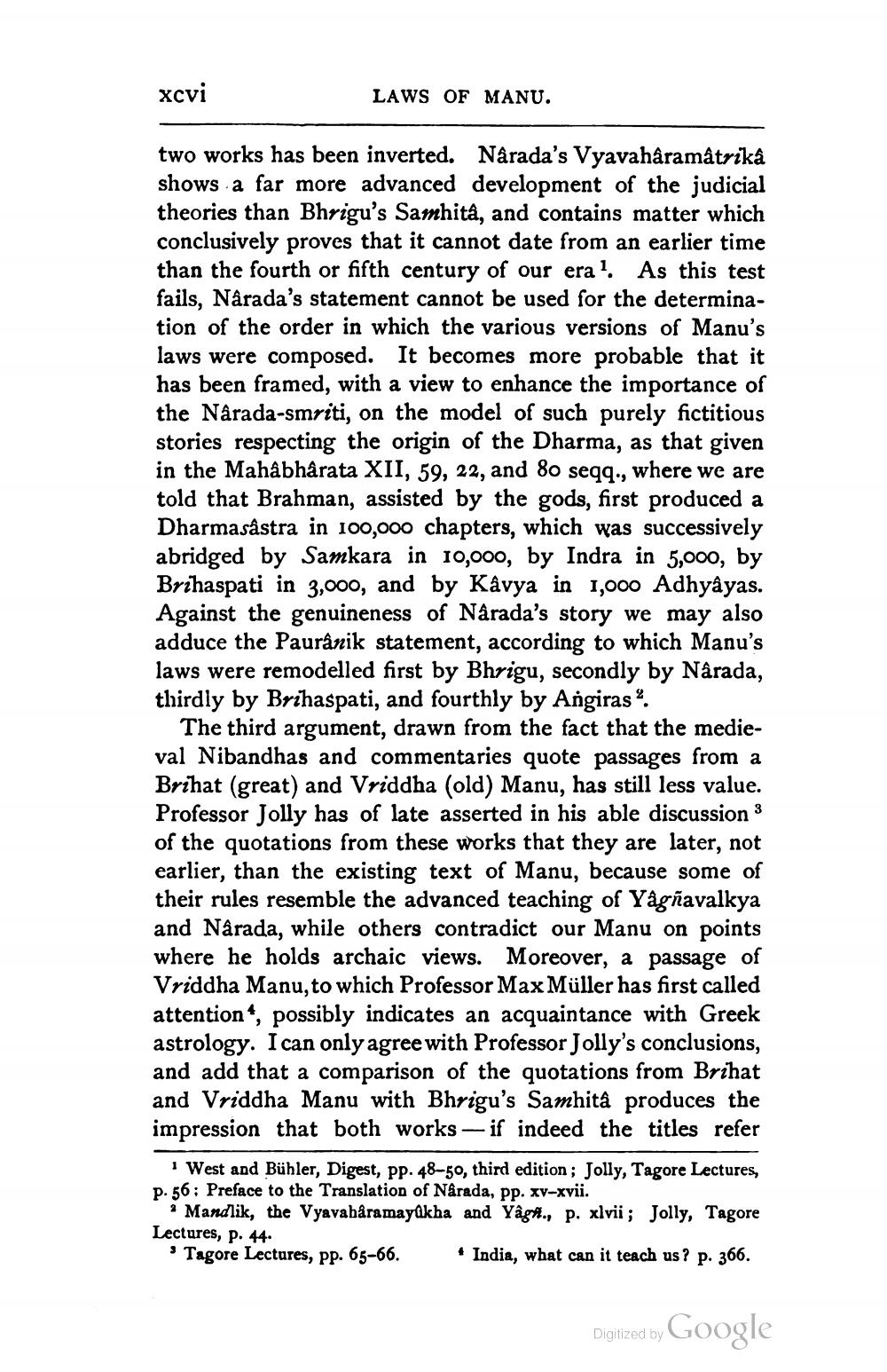________________
xcvi
LAWS OF MANU.
two works has been inverted. Narada's Vyavahâramåtrika shows a far more advanced development of the judicial theories than Bhrigu's Samhita, and contains matter which conclusively proves that it cannot date from an earlier time than the fourth or fifth century of our eral. As this test fails, Narada's statement cannot be used for the determination of the order in which the various versions of Manu's laws were composed. It becomes more probable that it has been framed, with a view to enhance the importance of the Nárada-smriti, on the model of such purely fictitious stories respecting the origin of the Dharma, as that given in the Mahabharata XII, 59, 22, and 80 seqq., where we are told that Brahman, assisted by the gods, first produced a Dharmasastra in 100,000 chapters, which was successively abridged by Samkara in 10,000, by Indra in 5,000, by Brihaspati in 3,000, and by Kavya in 1,000 Adhyâyas. Against the genuineness of Narada's story we may also adduce the Paurânik statement, according to which Manu's laws were remodelled first by Bhrigu, secondly by Nárada, thirdly by Brihaspati, and fourthly by Angiras.
The third argument, drawn from the fact that the medieval Nibandhas and commentaries quote passages from a Brihat (great) and Vriddha (old) Manu, has still less value. Professor Jolly has of late asserted in his able discussion 3 of the quotations from these works that they are later, not earlier, than the existing text of Manu, because some of their rules resemble the advanced teaching of Yågñavalkya and Närada, while others contradict our Manu on points where he holds archaic views. Moreover, a passage of Vriddha Manu, to which Professor Max Müller has first called attention“, possibly indicates an acquaintance with Greek astrology. I can only agree with Professor Jolly's conclusions, and add that a comparison of the quotations from Brihat and Vriddha Manu with Bhrigu's Samhità produces the impression that both works — if indeed the titles refer
West and Bühler, Digest, pp. 48-50, third edition ; Jolly, Tagore Lectures, p. 56: Preface to the Translation of Narada, pp. xv-xvii.
* Mandlik, the Vyavabåramayukha and Yâgtt., p. xlvii; Jolly, Tagore Lectures, p. 44. • Tagore Lectures, pp. 65-66. India, what can it teach us ? p. 366.
Digitized by Google




